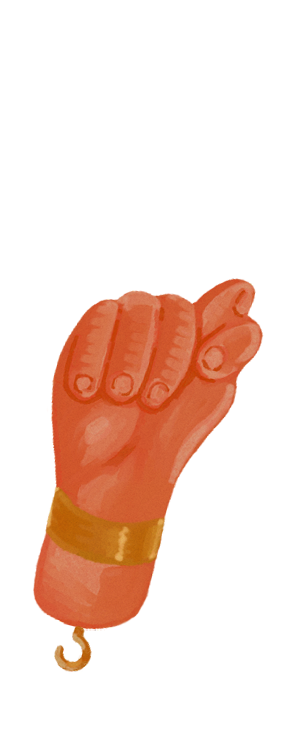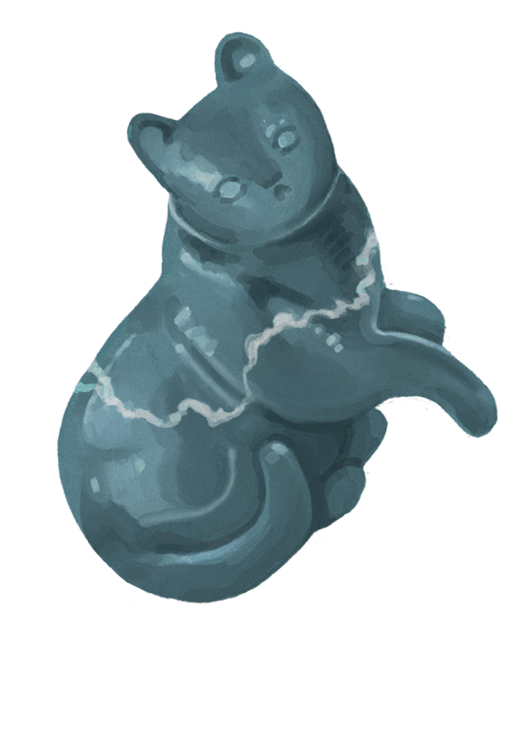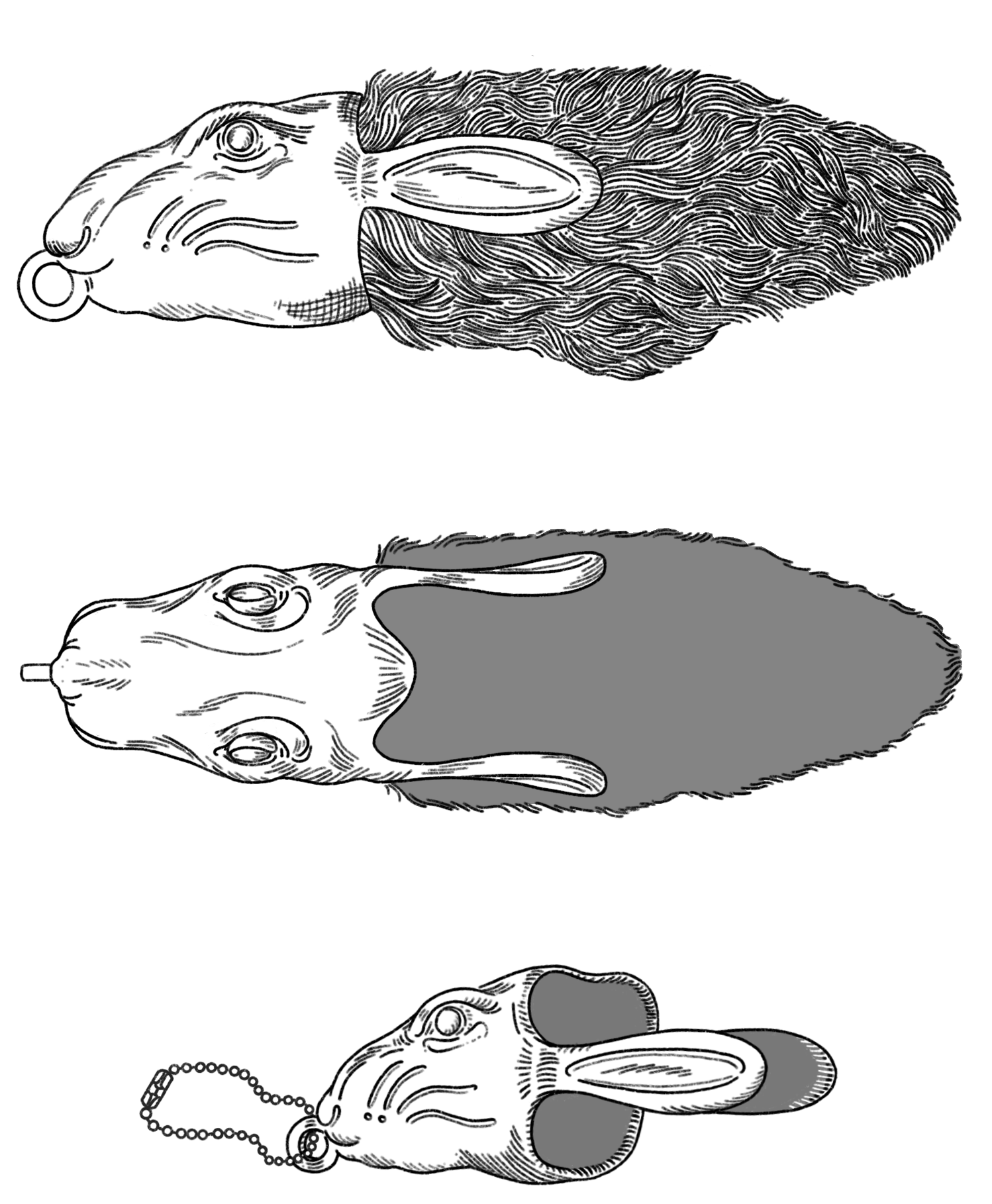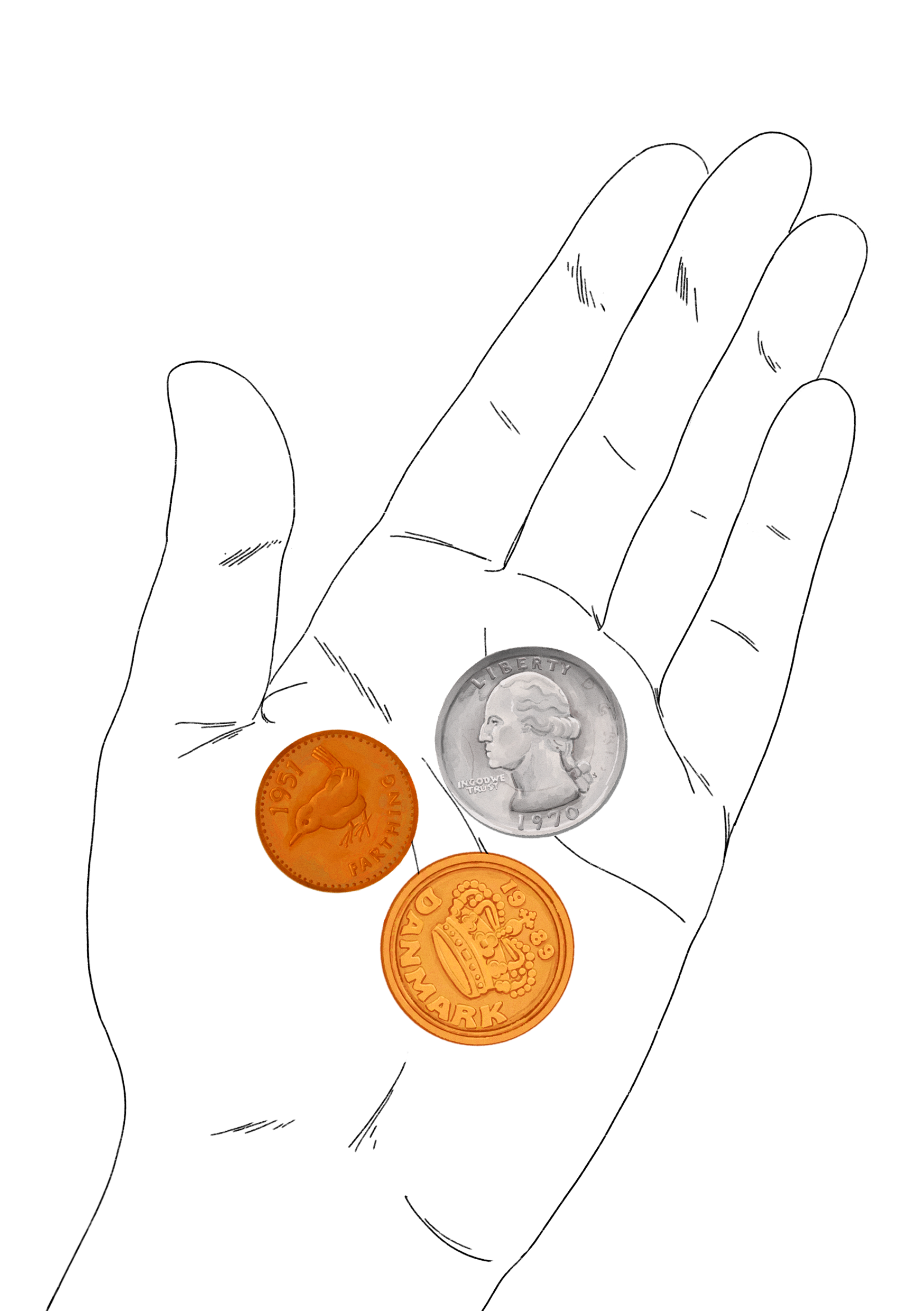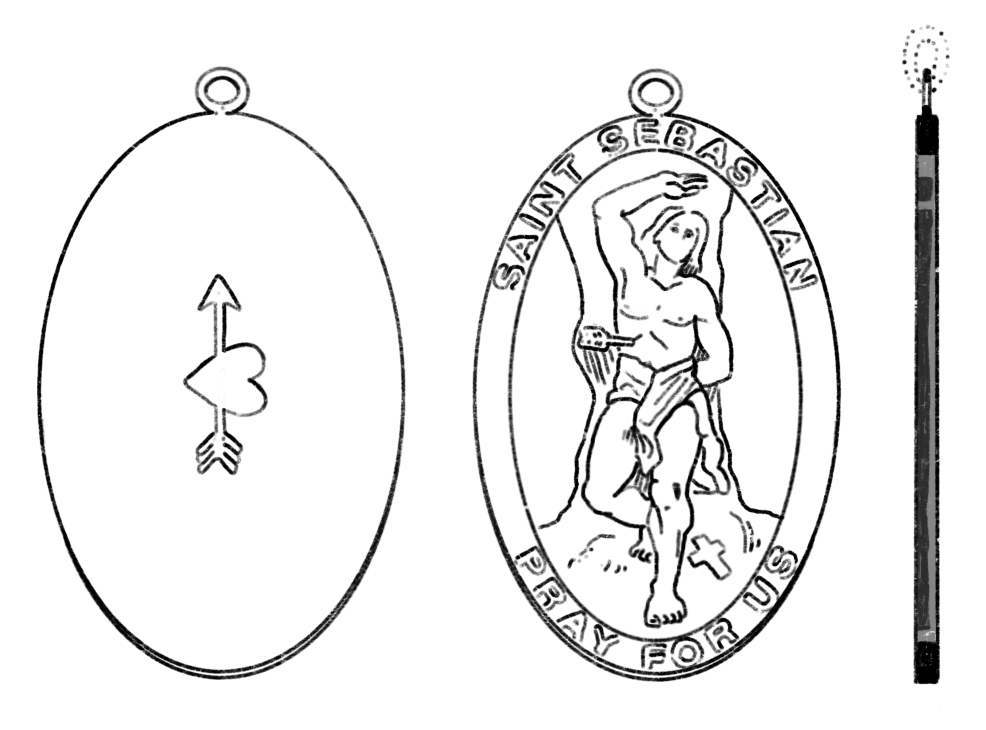A Queer Luck
[16 page zine with tracing paper inserts]
2022
In my practice, there are two research topics that feel integral to me, folklore and queerness and these felt like prosperous groundwork for where I would like to lead my projects towards. So much of queer history is hidden, supressed by bigotry, or forced underground, to be hidden in plain sight; secret nods from creator to audience.
I began to research luck tokens, amulets and talismans; hag-stones, touch-wood poppets and rabbit feet. Through my investigation into queer history and mythology; I found a lot; the most homoerotic saint, the proudest coin and how to distract the devil with hand gesture. I also looked into the visuals of archaeological and scientific illustration, where I found a real beauty to how refined the observations are, as well as the interplay of text on the page. Using this I went back into their history, then rerooted their recipes to produce new outcomes through the lens of queerness.
This took me in several visual directions; the act of holding, what happens when you remove the item, how do you show a delicate touch? I was interested too in how these tokens might be imparted; how you might, like spell, imbue temporary protection through a hidden tattoo.
I took my findings and began to brew up my own charms; wishing stone cats, lucky coins dated with significant queer history, It felt right to collect these all into a booklet; I wanted to curate a display of items but also allow space for the rich information I had uncovered, as though it were an accompanying pamphlet to a museum exhibit. I like the the act of costuming the unknown in the guise of canon. Taking on artistic forms of academic authority and cultural relevance to retell history. Taking these new queer charms and portraying them as though recently unearthed from an archaeological dig. It asks you to reconsider, reimagine what might be. It maybe also inspires you to look for you own personalised tokens.
I really wanted to work in the pages of tracing paper and a physical sense to re-view the items, overlaying hands to show how the item might be held. A lot of these items are activated through touch, a knock to wood, a kiss to a saint. There’s a real physicality to these items, we imbue them which such power, superstition. It’s an incredibly intimate thing, so often these things are found, passed on or gifted. They’re treasured. It also asks the audience themselves to interact with the item, turning to pages, lining up the gestures.
I began to research luck tokens, amulets and talismans; hag-stones, touch-wood poppets and rabbit feet. Through my investigation into queer history and mythology; I found a lot; the most homoerotic saint, the proudest coin and how to distract the devil with hand gesture. I also looked into the visuals of archaeological and scientific illustration, where I found a real beauty to how refined the observations are, as well as the interplay of text on the page. Using this I went back into their history, then rerooted their recipes to produce new outcomes through the lens of queerness.
This took me in several visual directions; the act of holding, what happens when you remove the item, how do you show a delicate touch? I was interested too in how these tokens might be imparted; how you might, like spell, imbue temporary protection through a hidden tattoo.
I took my findings and began to brew up my own charms; wishing stone cats, lucky coins dated with significant queer history, It felt right to collect these all into a booklet; I wanted to curate a display of items but also allow space for the rich information I had uncovered, as though it were an accompanying pamphlet to a museum exhibit. I like the the act of costuming the unknown in the guise of canon. Taking on artistic forms of academic authority and cultural relevance to retell history. Taking these new queer charms and portraying them as though recently unearthed from an archaeological dig. It asks you to reconsider, reimagine what might be. It maybe also inspires you to look for you own personalised tokens.
I really wanted to work in the pages of tracing paper and a physical sense to re-view the items, overlaying hands to show how the item might be held. A lot of these items are activated through touch, a knock to wood, a kiss to a saint. There’s a real physicality to these items, we imbue them which such power, superstition. It’s an incredibly intimate thing, so often these things are found, passed on or gifted. They’re treasured. It also asks the audience themselves to interact with the item, turning to pages, lining up the gestures.



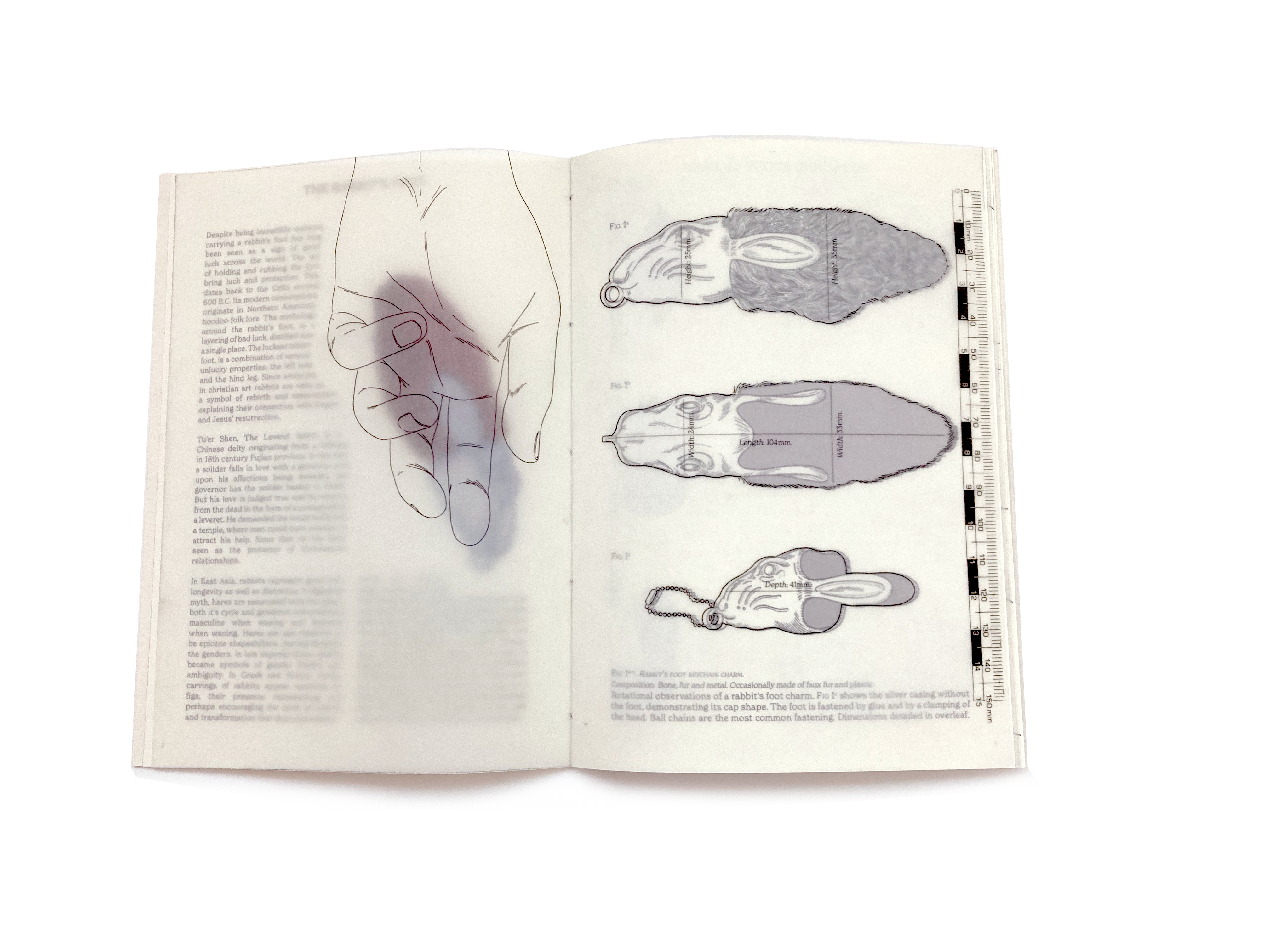

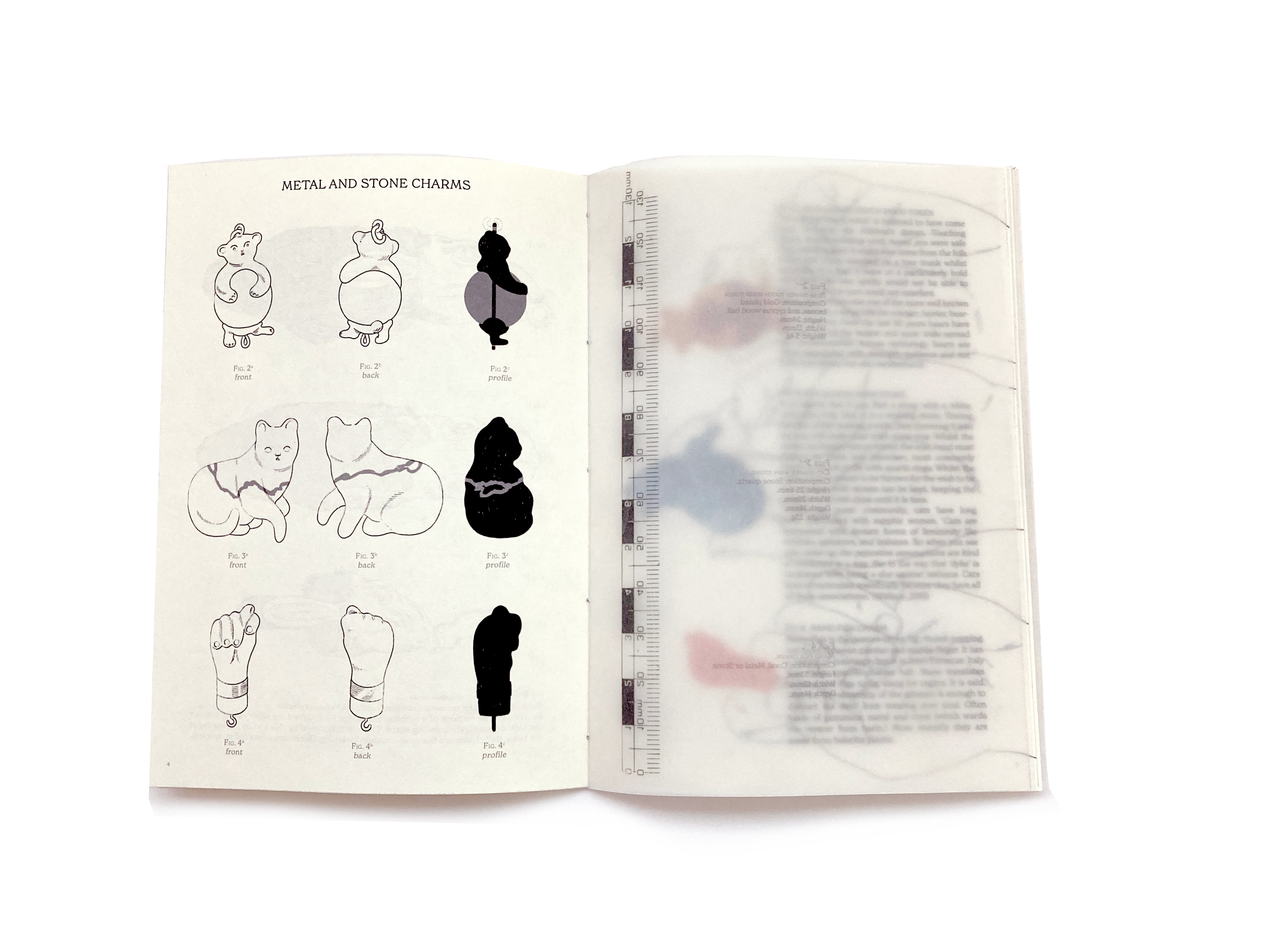

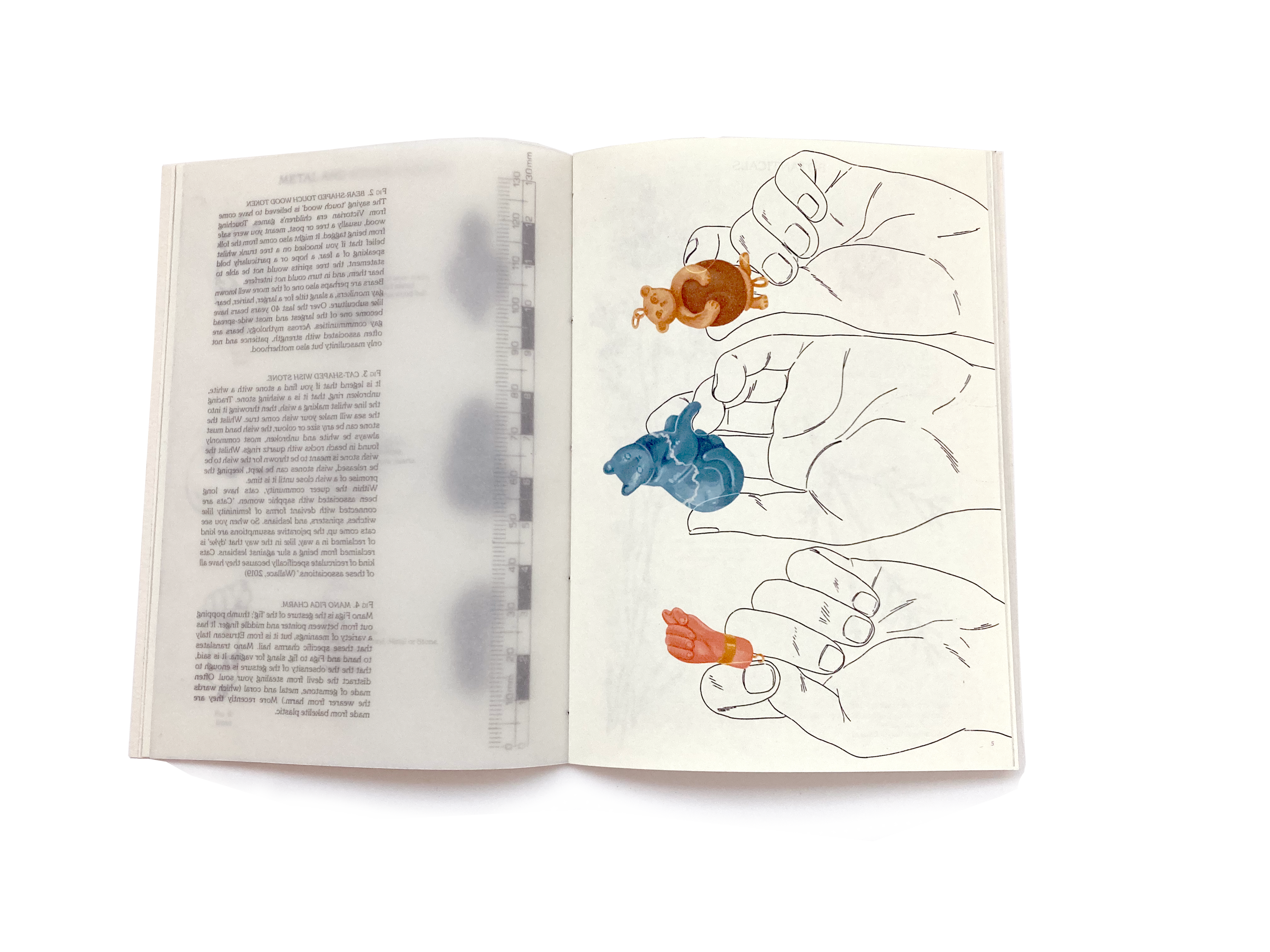

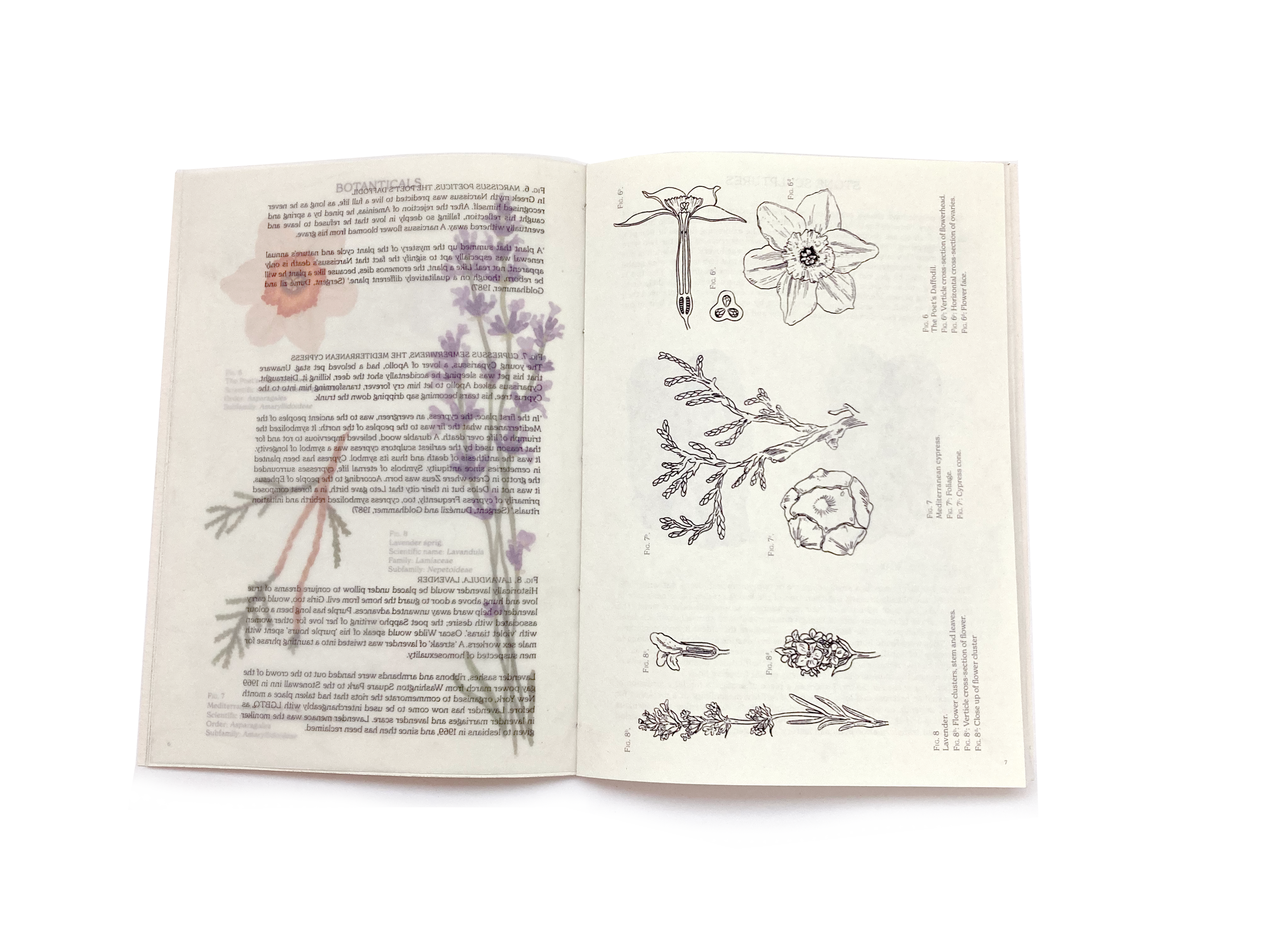


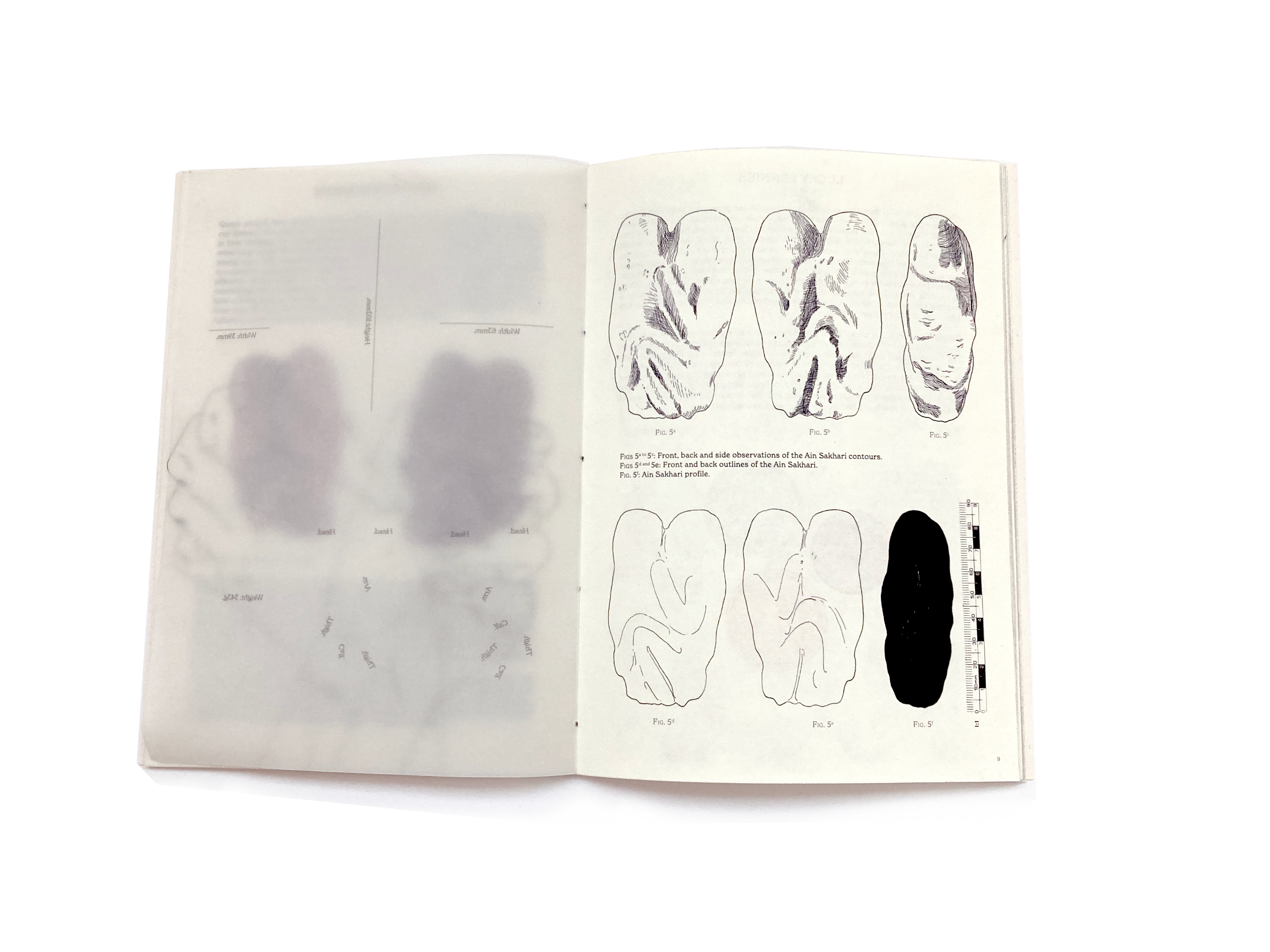

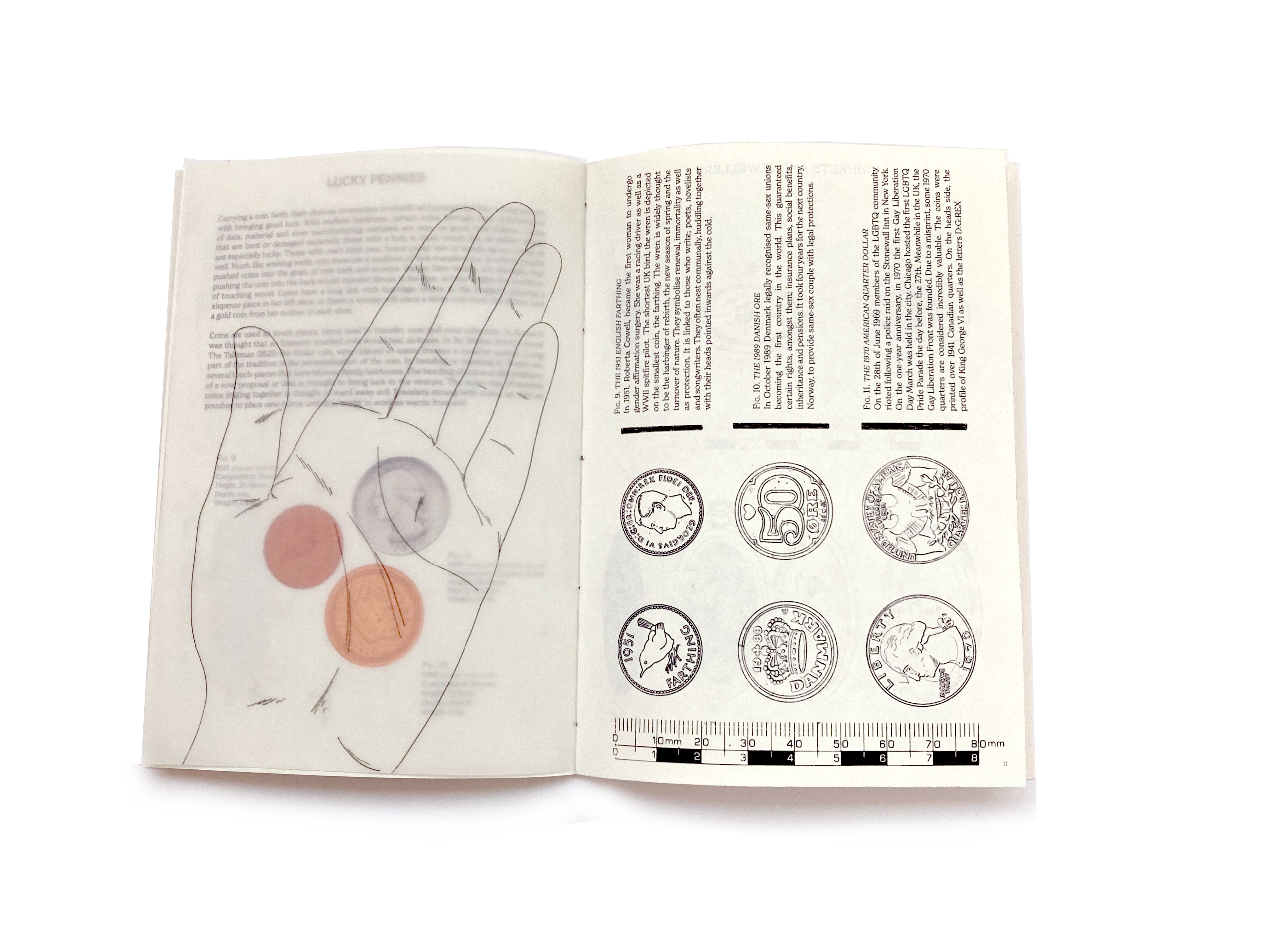

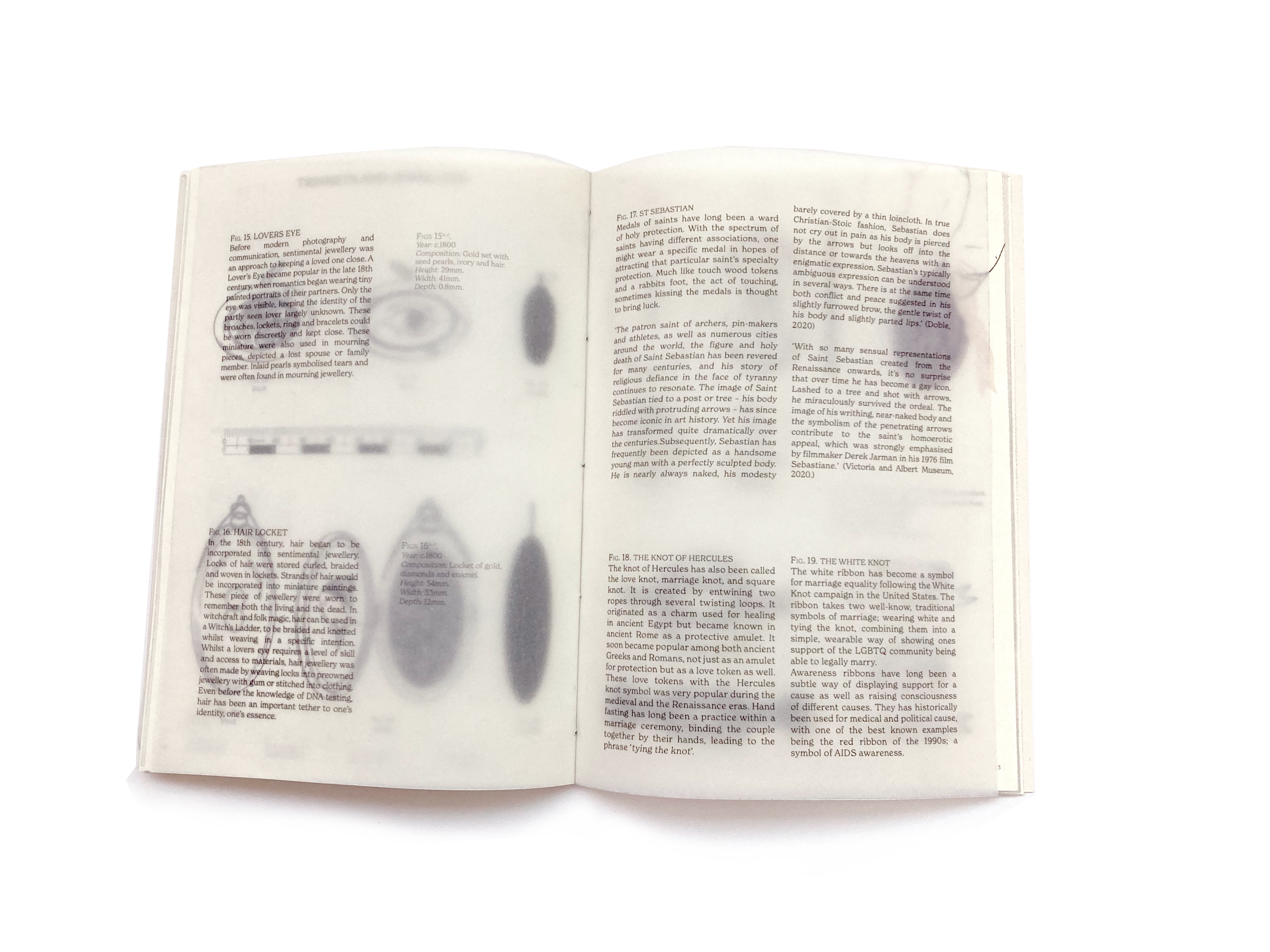

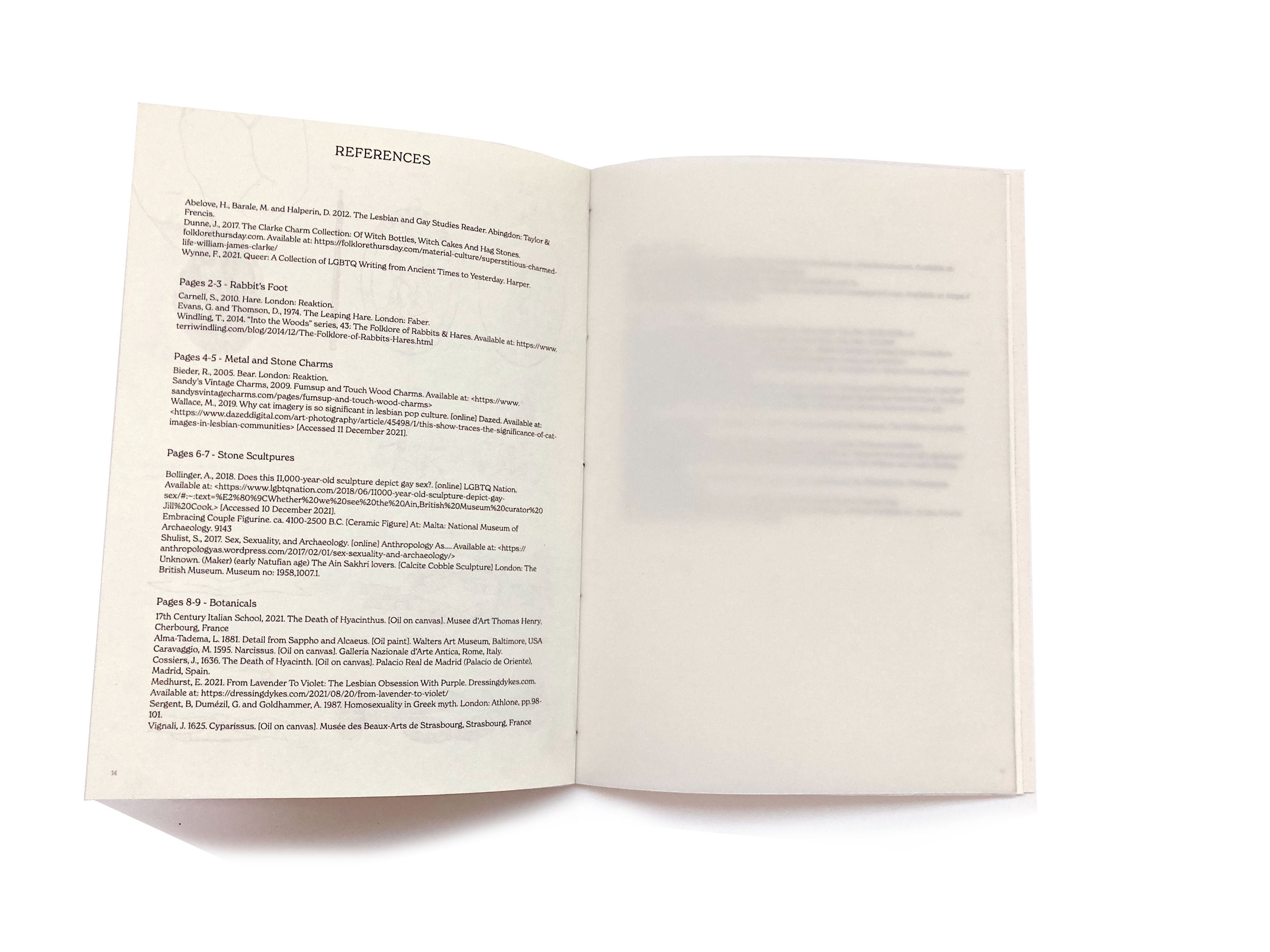
Inner Illustrations:







